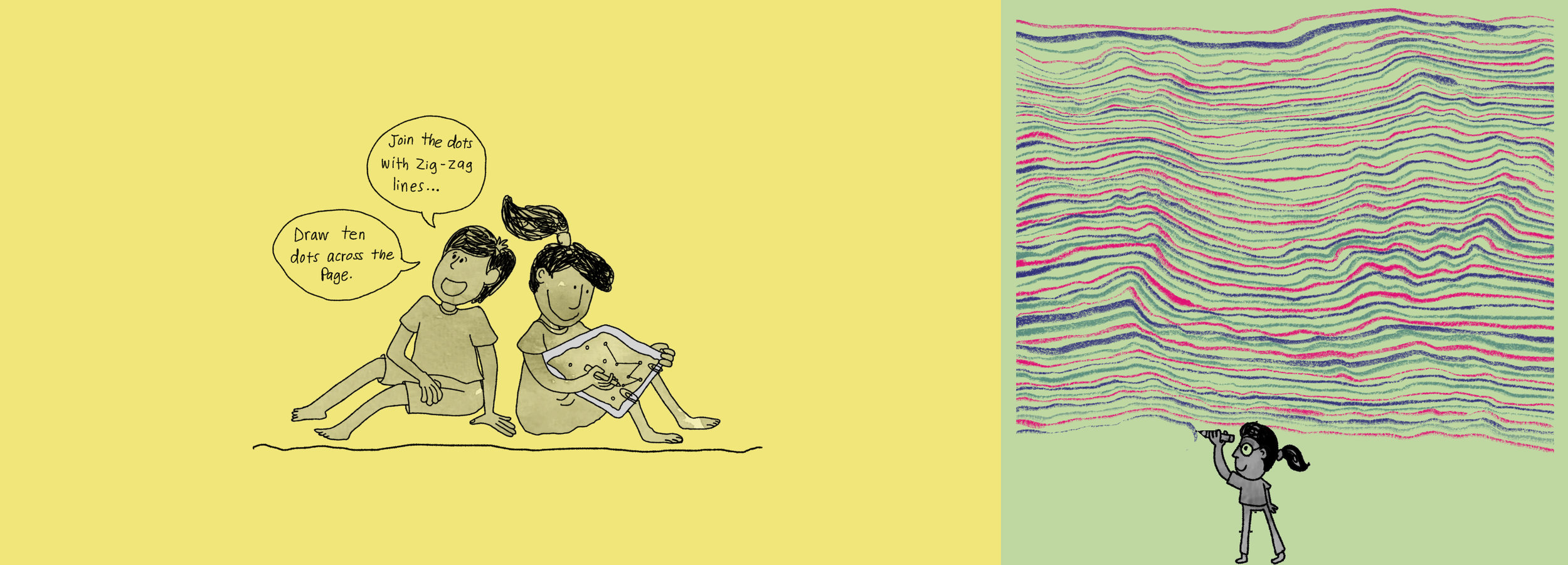3: Drawing by Instructing Each Other
Day 3:
Is there a right answer?
Sol-Lewitt’s Drawing no: 797
Today, I was armed with the support of Sahani Gunesekera, the current art class teacher at Building Hope. I was hoping I could give her a short break from her two years of volunteering, but eventually I roped her in, and she was great. Not only was she familiar with over half of the faces in the class, she is (obviously) great with kids, and with setting some order at the workshops. She is genuinely interested in the workshops as well as brainstorms for ways we can make the workshops fun. It’s great to have company, and I hope there’ll be more to come.
I’d say, it is an architect’s tool, a skill, to consider other people’s needs (their clients) when considering a design. For this, I would argue that listening, and acting on instinct (emotional response) is a valuable virtue that is a stepping stone toward being empowered. This was the basis for today’s workshop.
We pasted two bristol sheets on a wall, and, like Sol Lewitt in wall drawing 797 - asked a student to step up and draw a horizontal line on the top of the board - it didn’t have to be perfect. Then, students continued consecutively with a red, blue and yellow marker till the page was halfway down.. We finished it off the next day, and it turned out to be a therapeutic start to the day.
Small exercise,
Interpreting RULES
Next, it was time was to take it a step further. I found a small game online - that involved paper - pencils and crayons, and several instructions. The idea was - to ease students into the idea of listening and acting on it in a 2D drawing, prior to the transition in 3D. These were the rules:
1. Draw 4 lines, from one edge of the page to the other
2. Draw 5 circles, any size, any place
3. Draw a zig zag line that crosses all 5 circles
4. Color anywhere in two of the circles
From my observation- this exercise made the kids quite nervous.. Of course, although I asked them not to look at each other’s drawings - several sections of the class’s drawings looked remarkably like each other. There was also a sense of timidness- everything was drawn very small on a page- and not to fill the space of it.
An excerpt of work from the website from which I derived the exercise - http://kinderart.com/art-lessons/drawing/unique-drawing-experience/
Small exercise 2,
Back to back
This was where we attempted a ‘client-architect’ relationship with each other. We timed 10 minutes (or it would never end) and asked students to pair up and sit back to back (so they can’t see each other’s drawings) we asked one student (they designated themselves as person A and person B) to instruct the other to make a drawing. This they caught onto with much enthusiasm. In fact- some ‘pairs’ decided that they were best friends soon after.
Perhaps it was a mistake that we started off with a small demonstration - Sahani and I sat back to back, and I yelled - draw a cloud to fill the entire page-draw a floating house- paint the roof pink’ while Sahani pretended to draw —I should have thought of these prompts more carefully - as a majority of the drawings depicted a house, a tree, a man, a mountainside and the sun. However- there were several surprising ones, which we asked the students demonstrate to the class and talk about the challenges of describing their drawing to the other, and assessing whether their partner interpreted them the way they imagined.






